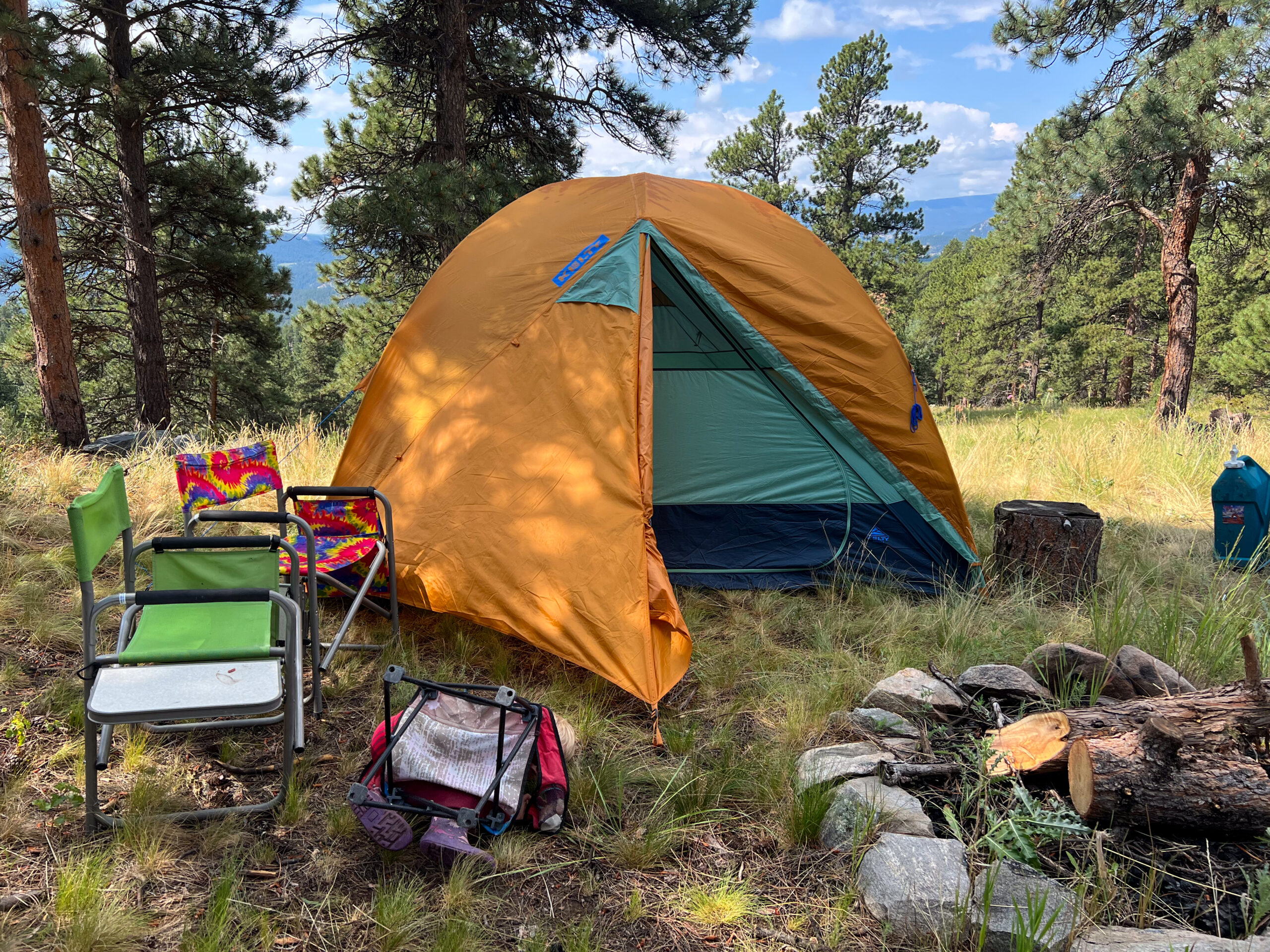Bottom Line
The Kelty Wireless 6 is a feature-packed, six-person tent with a spacious interior and strong build, all at a surprisingly low price. With tents at this price point becoming increasingly rare, the Wireless 6 stands out as one of our top budget-friendly camping tents. To thoroughly test every aspect of this tent, we packed up the family and embarked on a six-week, eight-state road trip.
We are genuinely impressed by the quality and usability of this tent. Its high peak height will delight taller campers, and the dual vestibule design adds 14 square feet to an already spacious interior. It also holds up well against the elements, including driving rain and high winds, and is easy to set up thanks to its color-coded tab system.
However, the Wireless 6 does have its drawbacks. Ventilation is limited, leading to stuffiness and potential condensation issues. Despite its high-quality construction, there are concerns about the longevity of the poles, and at over 22 pounds, it’s quite heavy.
Quick Specs
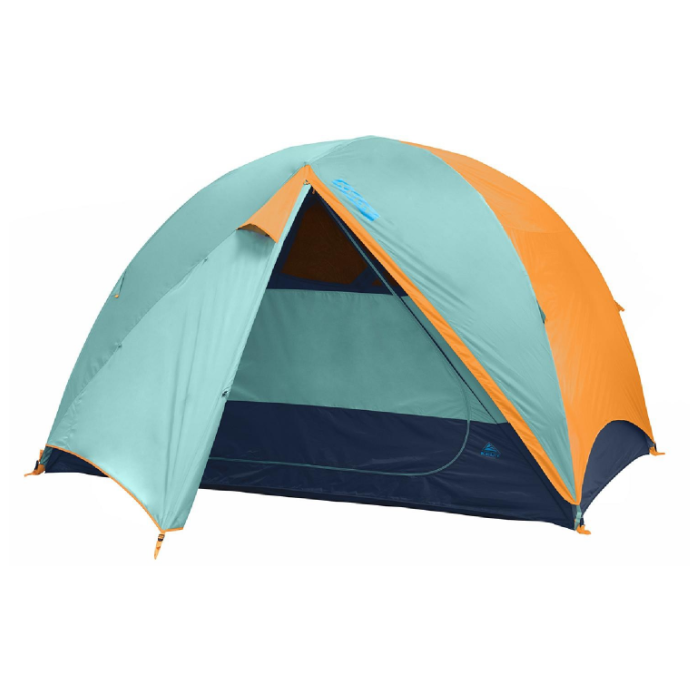
Kelty Wireless 6
Best Bang for Your Buck
Price:
$280
The size we tested feels:
Luxurious for 2-3, comfortable for 4 & tight for 5
Weight:
17 lb. 3 oz.
Dimensions (LxWxH):
118 x 106 x 76 in.
Pros
- Huge interior
- Color-coded tabs for easy setup
- Less expensive
- Intuitive and fast to pitch
- Multiple sizes
- Excellent carrying case
Cons
- Footprint sold separately
- Only a few small internal pockets
- Doesn’t ventilate well
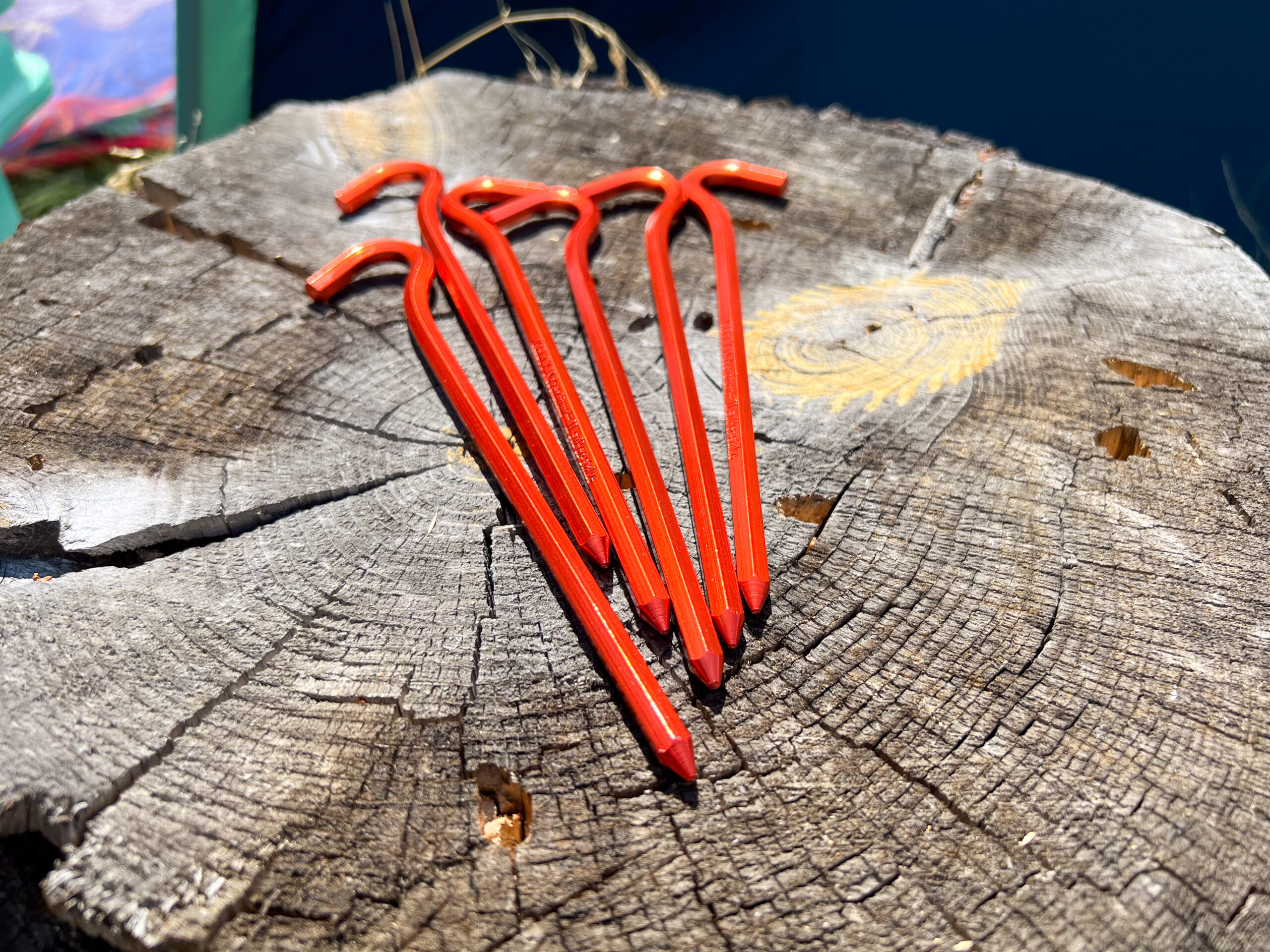
Comfort
The Wireless 6 boasts a spacious interior with 70 square feet and a 76-inch peak height, offering more than enough room for a family of four. Tall campers will appreciate the generous headroom, eliminating the need to crouch while standing. The long brow pole enhances stability, keeping the inner tent taut and the walls nearly vertical to maximize space. While the tent can theoretically sleep six people, gear storage is limited inside.
However, the dual vestibule design adds 14 square feet of extra space for storing equipment outside the main area. Overall, the Wireless 6 is well-suited for families and provides a comfortable and functional living space. We should note that this tent does not ventilate well and that can affect the climate inside. It can get stuffy, especially during warmer days and humid nights. You can help mitigate this by opening and rolling back the vestibule doors but then your gear might be exposed to the elements.
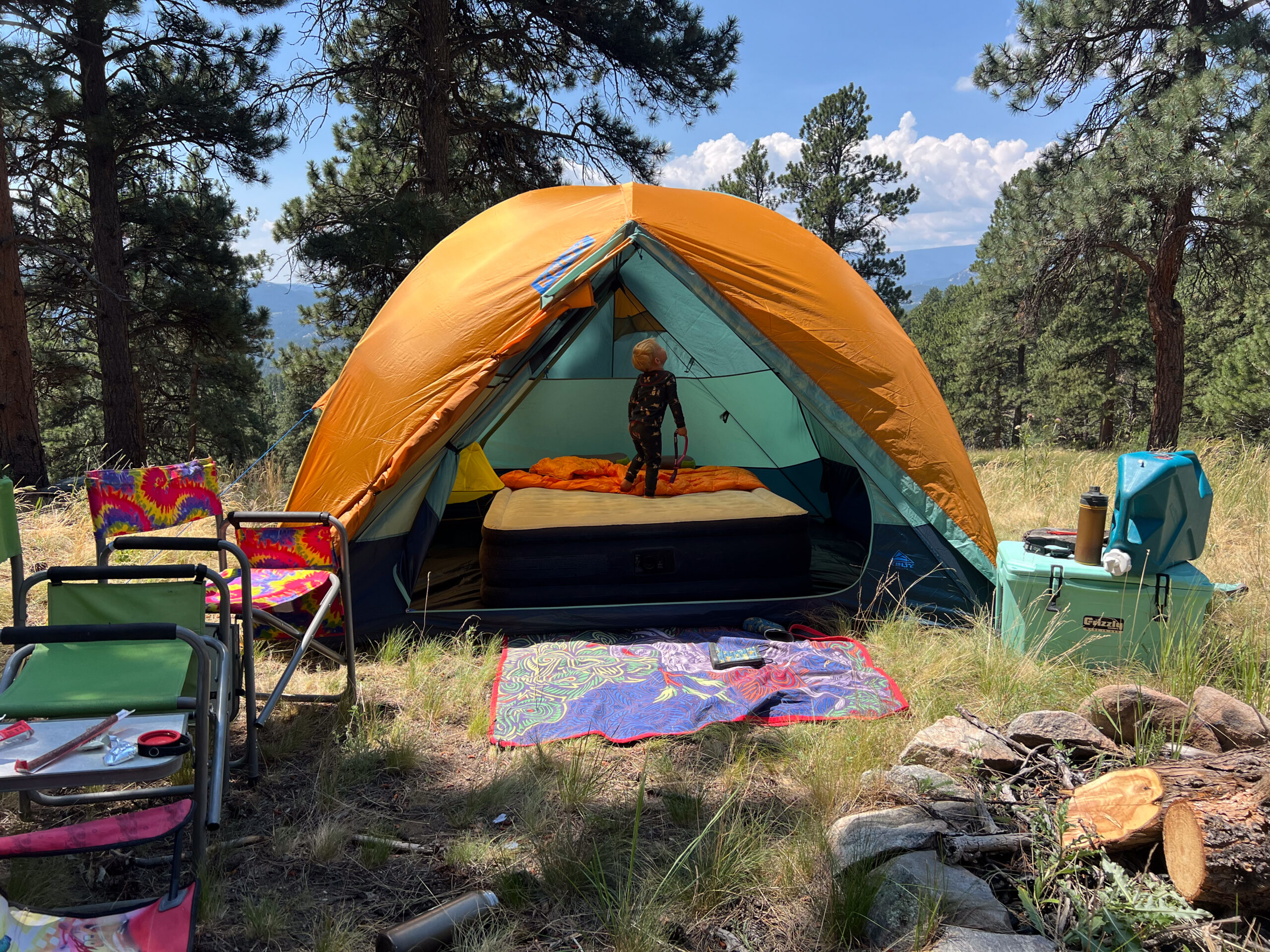
Durability
The biggest drawback of this model is the poles. They are made from fiberglass rather than more durable aluminum. While fiberglass can be a good material for tent poles, we’d prefer them to be a bit thicker for added strength.
After our twelfth night using the tent, we experienced a shock cord break in one of them while taking it down. We were able to repair it and continue using the tent without further issues, but it’s something to keep in mind. We don’t believe the poles are of poor quality, but it’s important to handle them with care. Avoid pulling on them as this can stress the shock cord; instead, push them gently in and out of the pole sleeves to ensure longevity.
The fabric materials used in the construction of the Wireless 6 are surprisingly good for the price. Kelty has fully taped all of the seams for added protection, and the mesh feels sturdier than some other tents we’ve tested. The stakes seem sturdy, though we bent a few in Colorado’s rocky soil. Overall, the Kelty Wireless 6 offers mid-tier quality, but for the price, it’s hard to beat.
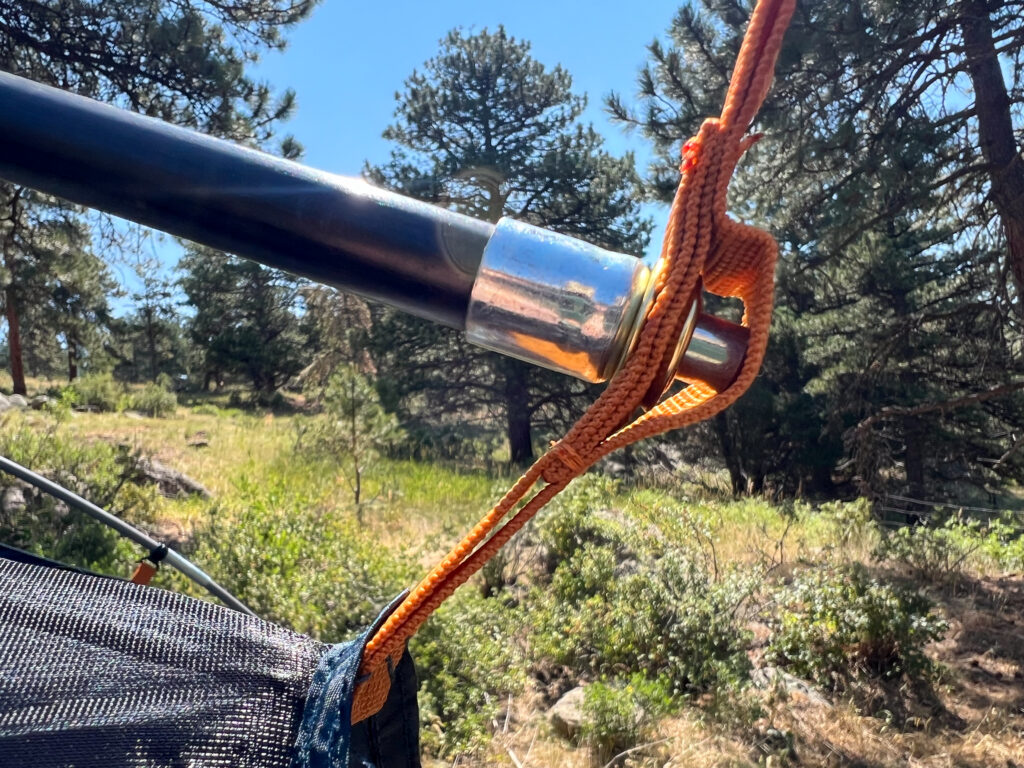
Weather Resistance
Overall, the Wireless 6 scores well in the weather resistance category. We tested this tent in some intense Colorado thunderstorms, and it held its own against moderate winds and torrential downpours. It’s important to note that the Wireless 6 does not include a footprint, so we tested the tent both as it arrived and with a ground tarp. Without a footprint, we did experience some leakage through the bottom of the tent, which wasn’t surprising. We always recommend using a footprint or ground tarp to protect the most vulnerable part of the setup. When tested with a ground tarp, we encountered no leakage despite similar rain conditions.
On hot days, when you can sleep without the rainfly, the Wireless 6 is great, thanks to ample mesh that allows warm air to escape. However, with the rainfly fully deployed, ventilation is limited, which can lead to hot and stuffy sleeping conditions. The tent’s shape and wall angles shed rain well, and when fully guyed out, the Wireless 6 handles light to moderate winds effectively. Like any tent of this size, it struggles in high-wind scenarios, so if you’re expecting strong gusts, it’s best to pitch the Wireless 6 near a windbreak.
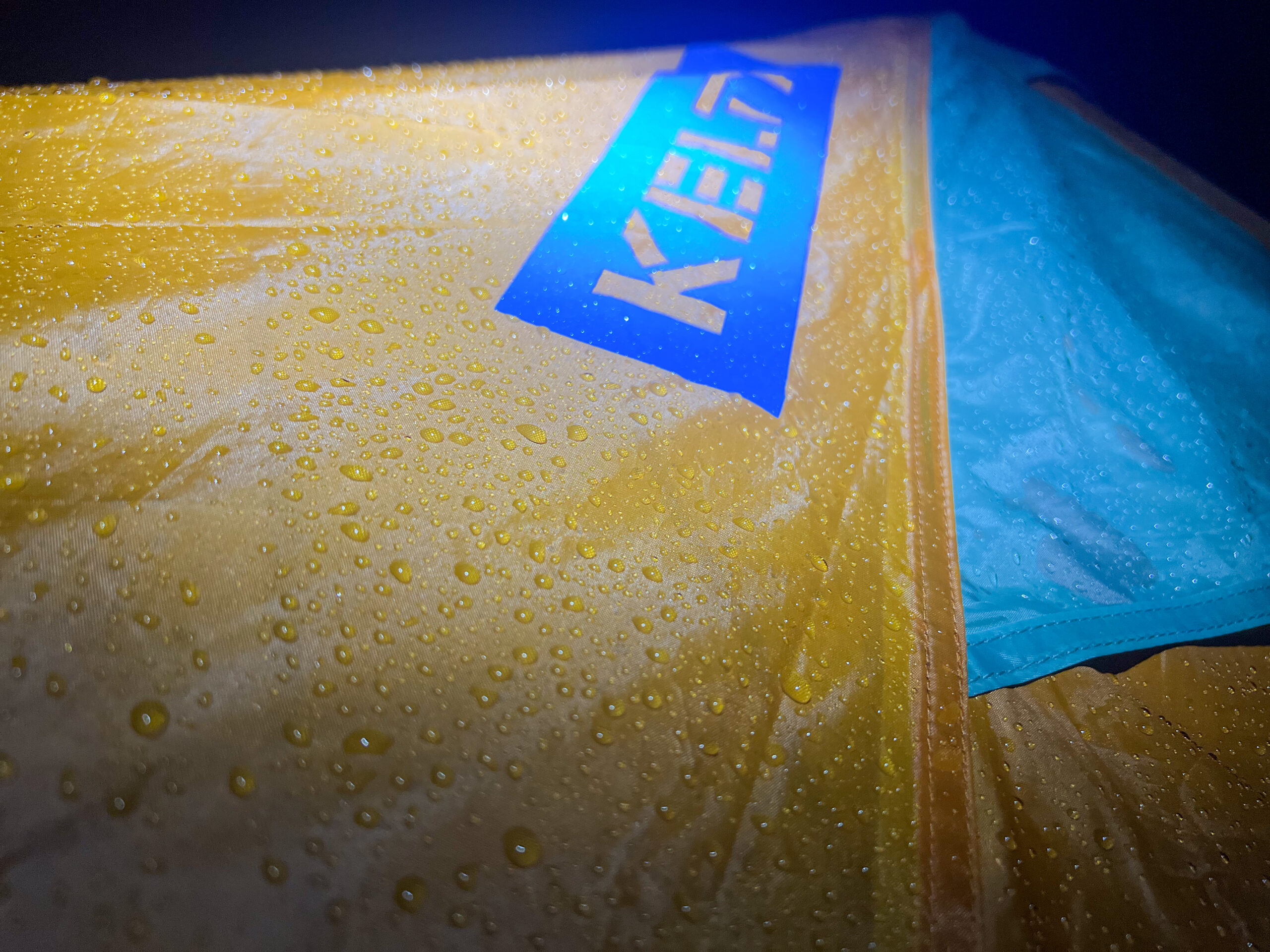
Ease of Setup
We found the Kelty Wireless 6 to be remarkably easy and intuitive to pitch. Even as a solo camper, you can set up this tent in under 10 minutes, and it’s even quicker with a partner. Unlike many tents that use grommets for pole attachments, the Wireless 6 features small pole sleeves at the corners, which simplifies the setup process.
Kelty also includes color-coded tabs for one corner of the tent and rainfly, eliminating the guesswork of orientation. The tent’s design ensures that everything fits together nicely. Although the tent is on the taller side, which might make it a bit challenging for shorter campers to reach the center clip once the poles are up, overall, the setup is straightforward and hassle-free. The thoughtful design makes the Kelty Wireless 6 one of the easier tents to pitch in its class.
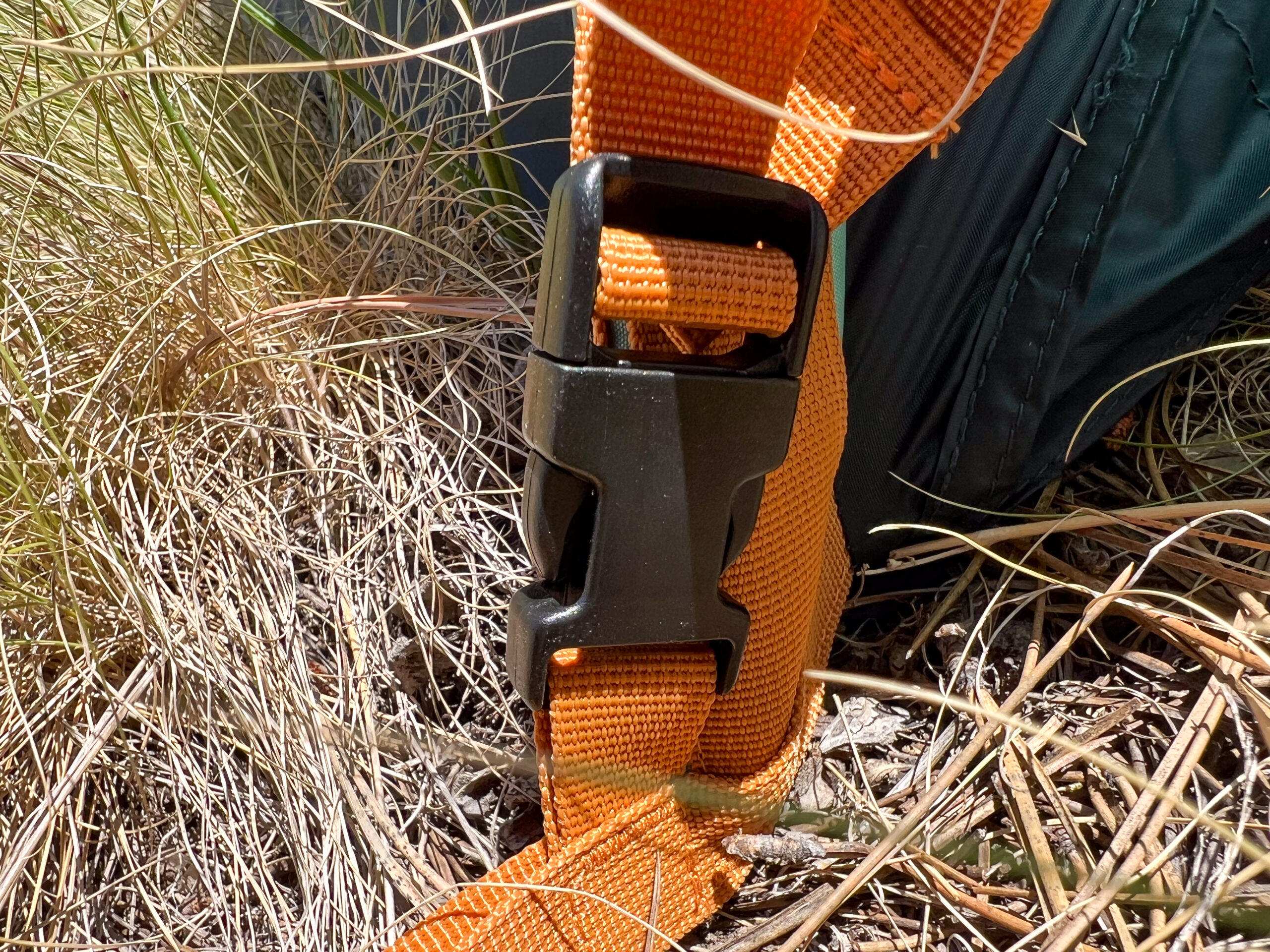
Features
When it comes to the features of the Kelty Wireless 6, we feel it leaves a little to be desired. Starting with the good: we love the quick corner sleeves and color-coded webbing that make pitching the tent easy and intuitive. The dual large vestibules are also a plus, offering extra space for gear storage when the rainfly is deployed. It may seem minor, but we really appreciate the carrying case. Packing up camp is always a hassle, and it’s worse when your gear doesn’t easily fit back into its stuff sack. The Kelty Wireless 6 makes this process a bit less frustrating. The case has a zipper running the length of the bag, so you can simply roll up the tent, place it inside, and zip it closed. The case is spacious enough to comfortably fit the tent and all its components, eliminating the struggle of packing.
Now for the not-so-good: the Wireless 6 only has four small pockets, which seem like they might stretch or tear over time. For a tent designed for six people, we’d like to see more storage options. Additionally, the tent suffers from poor ventilation. Without enough airflow, moisture can build up inside, leading to condensation and a damp night’s sleep, even without rain. More ventilation flaps on the rainfly would significantly improve airflow and help with the condensation issue.
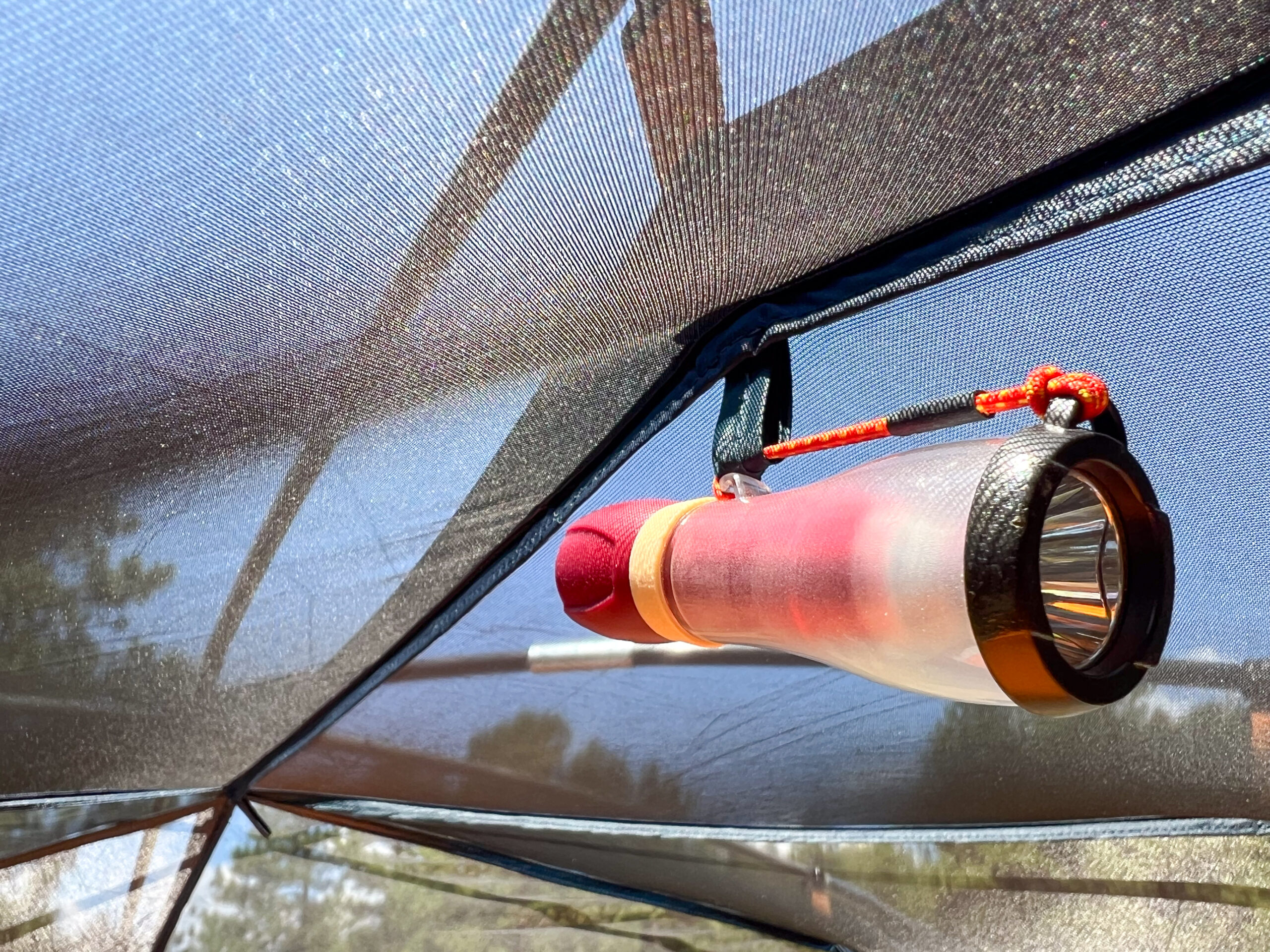
Should You Buy the Kelty Wireless 6?
The Kelty Wireless 6 is an excellent budget buy, ideal for those with price constraints or those looking for their first family-friendly tent. Its spacious interior is great for taller campers, and the extra vestibule room is perfect for storing additional gear on extended trips or for setting up a base camp.
At roughly 17 pounds, it’s not suited for backpacking, and if you anticipate heavy use, you might consider a more premium option. However, for casual camping and family adventures, the Wireless 6 offers impressive value and functionality.
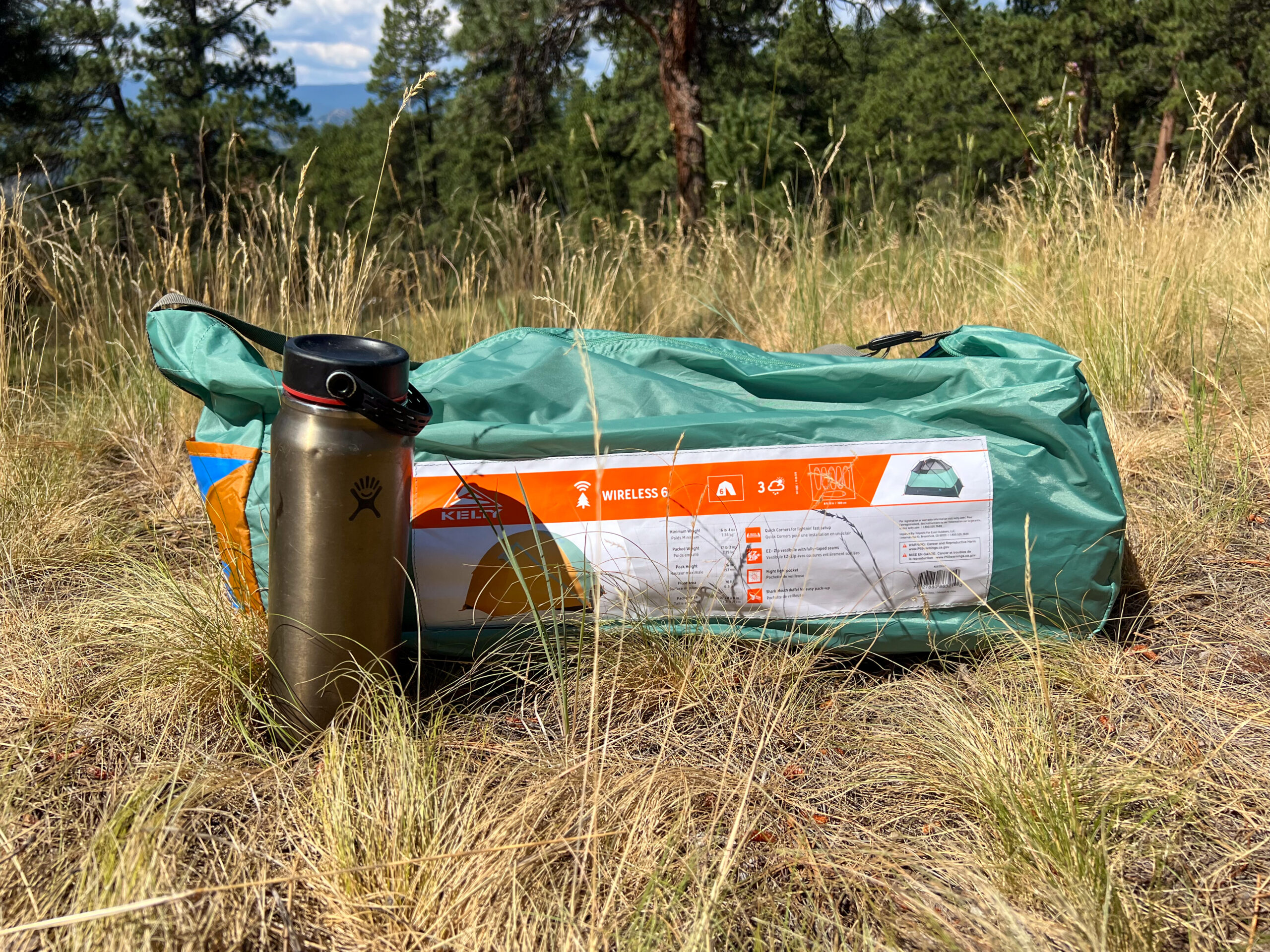
What Other Camping Tents Should You Consider?
REI Skyward 4 Review: The Skyward 4 is smaller than the Wireless 6 but is made with quality materials, offers excellent livable space, and features a tall peak height to avoid crouching while standing.
NEMO Aurora Highrise 4 Review: For a little more money, you might want to check out the Highrise 4. While it’s technically a four-person tent and pricier, it offers a similar interior livable space with higher-quality materials. If you plan on spending more nights under the stars, the NEMO Highrise might be a better choice.
The North Face Wawona 6 Review: The Wawona 6 is on the opposite end of the budget spectrum and offers a similar amount of internal space. The difference is that the Wawona 6 is packed with some of our favorite features and includes a massive vestibule that’s almost as large as some of the tents we tested.
